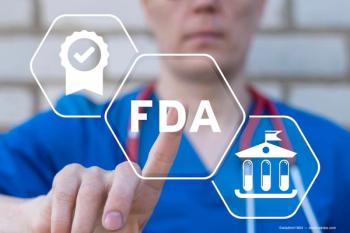
NEI study characterizes natural history of keratoconus
The risk of scarring was increased 3.6-fold among patients who wore contact lenses at baseline relative to those who did not wear contact lenses.
Washington, DC-Data from the National Eye Institute-funded Collaborative Longitudinal Evaluation of Keratoconus (CLEK) Study are providing useful insights on the natural history of that disease.
"What we have tried to do in designing this observational study is to look at a large cohort of patients in a rigorous way," said Karla Zadnik, OD, PhD.
The CLEK Study is being conducted at 15 participating clinics and enrolled 1,209 patients during 1995 and 1996. Annual follow-up spanned 8 years, according to Dr. Zadnik, who spoke at the World Cornea Congress V.
"Defining keratoconus was one of the challenges we faced in creating the protocol, and we tried to develop inclusion and exclusion criteria so we would choose patients with keratoconus and nothing but. By excluding patients with any media or posterior segment disease, our population has few older patients," noted Dr. Zadnik, the Glenn A. Fry Professor, Ohio State University College of Optometry, Columbus.
RGP lens wear high
Data collected at baseline showed that three-fourths of the patients wore rigid gas-permeable (RGP) contact lenses bilaterally for visual correction, although nearly two-thirds also wore spectacles too, either with the contact lenses or when the lenses were removed in the evening. Only 3.6% of the subjects did not use any visual correction in either eye, 8% wore a rigid contact lens in one eye only, and few patients used an alternative contact lens method of correction, such as piggyback contact lenses (2%) or Softperm hybrid lenses (3%).
Among the nearly 900 contact lens wearers, 73% reported their lenses were comfortable bilaterally, while nearly 11% reported experiencing lens-related irritation in both eyes. The remaining 16.4% of the sample said one lens was comfortable and the other was irritating.
Nearly 90% responded to a question about eye rubbing, and, of those, about half said they rubbed both eyes vigorously, whereas only 1.8% reported rubbing only one eye vigorously.
"The latter finding is consistent with literature case reports of patients with unilateral keratoconus who rub the affected eye vigorously," Dr. Zadnik said.
A family history of keratoconus, including parents, siblings, children, aunts, or uncles, was reported by 13.5% of the participants. Dr. Zadnik observed that the rate is higher than has been reported in retrospective studies and likely reflects the prospective method of data collection in the CLEK Study.
Associations with systemic disease were investigated through self-reporting, and the results showed atopy was common. About half of the patients reported having hay fever or allergies, 15% suffered from asthma, and 8% had atopic dermatitis. However, when asked about other diseases that have been reported associated with keratoconus, such as connective tissue disease, no patients reported a positive history.
"We all know of reports in the literature of keratoconus being associated with rare systemic diseases, but I don't think any optometrists or ophthalmologists would say that any of those diseases are found in a large number of patients with keratoconus," Dr. Zadnik said.
Characterizing the features of corneal scarring in patients with keratoconus is one of the major objectives of the CLEK Study.
"Knowing that scarring is a defining event for these patients in terms of their vision, we are very interested in finding out when scarring occurs, how often, and what causes it," Dr. Zadnik said.
Newsletter
Don’t miss out—get Ophthalmology Times updates on the latest clinical advancements and expert interviews, straight to your inbox.



















































.png)


